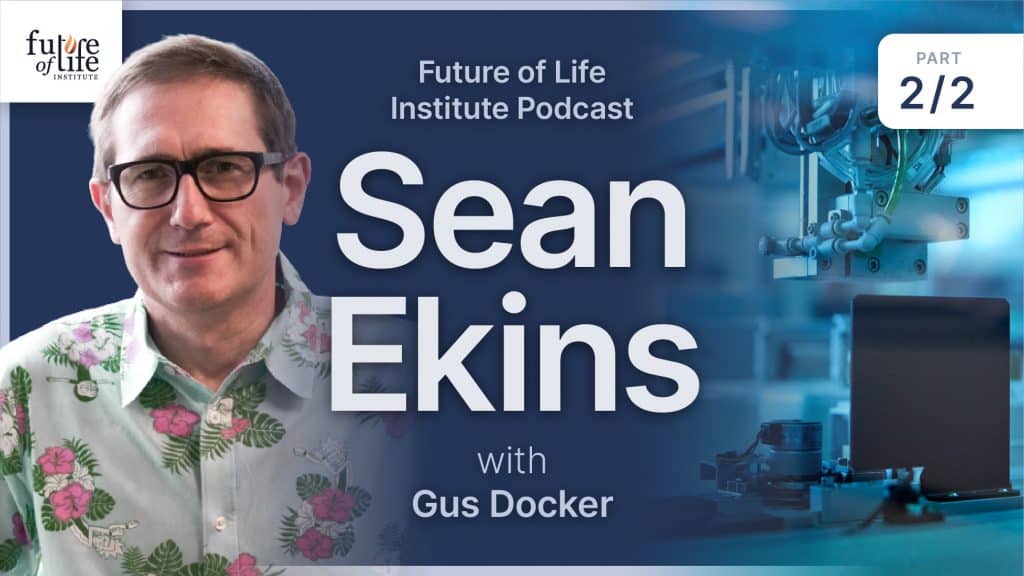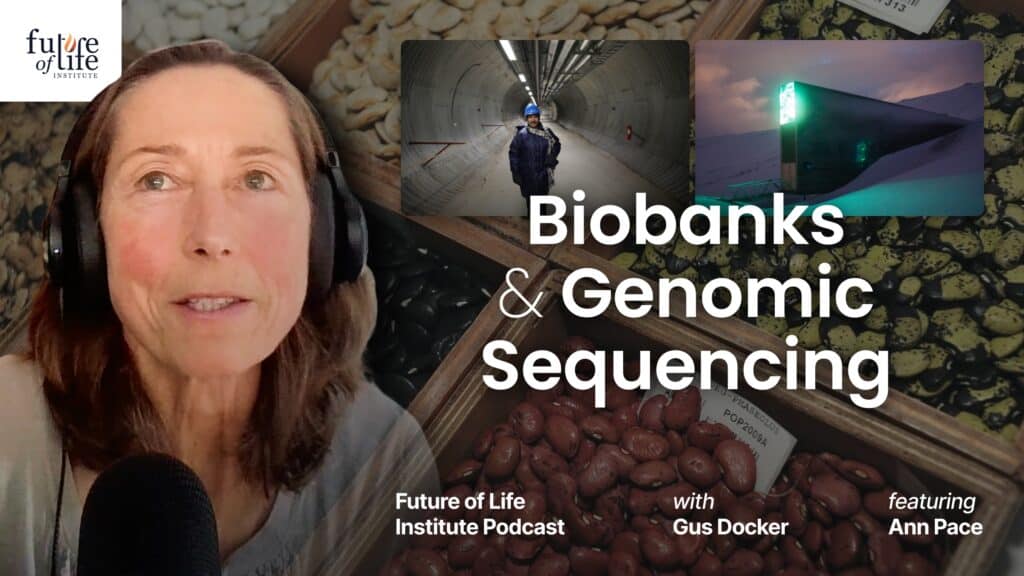Benefits & Risks of Biotechnology
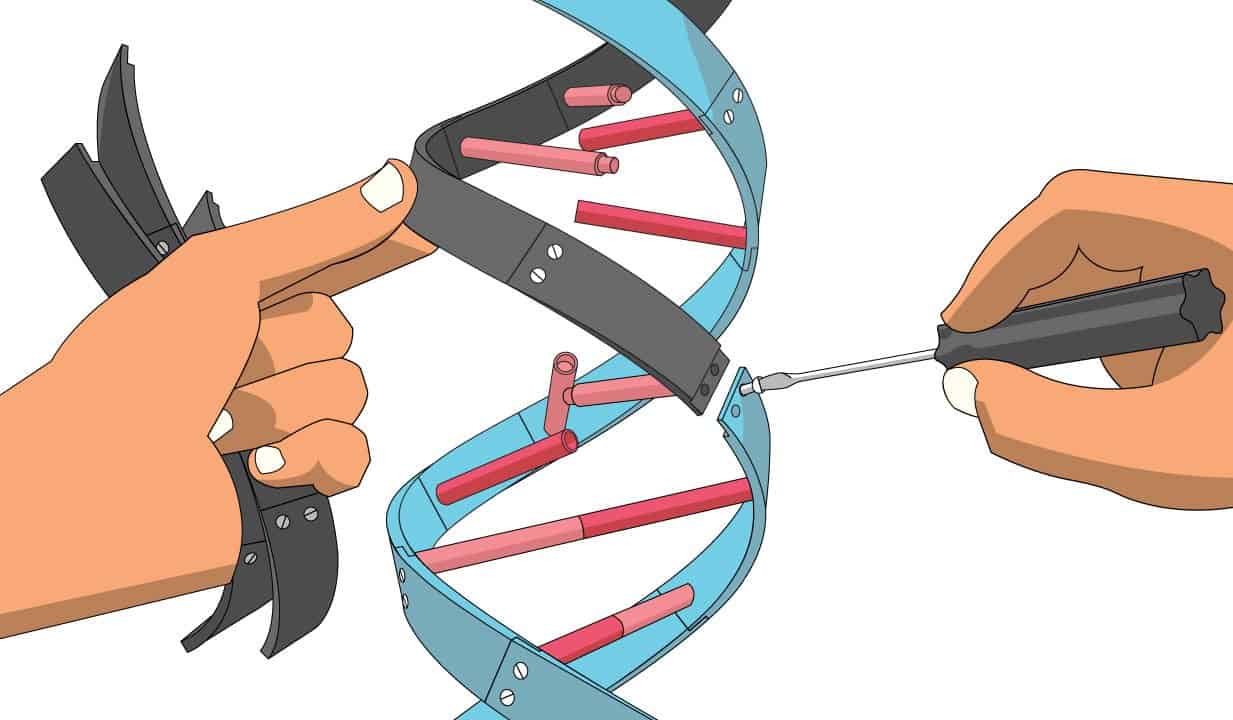
Contents
Click here to see this page in other languages: Japanese ![]() Russian
Russian ![]()
“This is a whole new era where we’re moving beyond little edits on single genes to being able to write whatever we want throughout the genome.”
-George Church, Professor of Genetics at Harvard Medical School
What is biotechnology?
How are scientists putting nature’s machinery to use for the good of humanity, and how could things go wrong?
Biotechnology is nearly as old as humanity itself. The food you eat and the pets you love? You can thank our distant ancestors for kickstarting the agricultural revolution, using artificial selection for crops, livestock, and other domesticated animals. When Edward Jenner invented vaccines and when Alexander Fleming discovered antibiotics, they were harnessing the power of biotechnology. And, of course, modern civilization would hardly be imaginable without the fermentation processes that gave us beer, wine, and cheese!
When he coined the term in 1919, the agriculturalist Karl Ereky described ‘biotechnology’ as “all lines of work by which products are produced from raw materials with the aid of living things.” In modern biotechnology, researchers modify DNA and proteins to shape the capabilities of living cells, plants, and animals into something useful for humans. Biotechnologists do this by sequencing, or reading, the DNA found in nature, and then manipulating it in a test tube – or, more recently, inside of living cells.
In fact, the most exciting biotechnology advances of recent times are occurring at the microscopic level (and smaller!) within the membranes of cells. After decades of basic research into decoding the chemical and genetic makeup of cells, biologists in the mid-20th century launched what would become a multi-decade flurry of research and breakthroughs. Their work has brought us the powerful cellular tools at biotechnologists’ disposal today. In the coming decades, scientists will use the tools of biotechnology to manipulate cells with increasing control, from precision editing of DNA to synthesizing entire genomes from their basic chemical building blocks. These cells could go on to become bomb-sniffing plants, miracle cancer drugs, or ‘de-extincted’ wooly mammoths. And biotechnology may be a crucial ally in the fight against climate change.
But rewriting the blueprints of life carries an enormous risk. To begin with, the same technology being used to extend our lives could instead be used to end them. While researchers might see the engineering of a supercharged flu virus as a perfectly reasonable way to better understand and thus fight the flu, the public might see the drawbacks as equally obvious: the virus could escape, or someone could weaponize the research. And the advanced genetic tools that some are considering for mosquito control could have unforeseen effects, possibly leading to environmental damage. The most sophisticated biotechnology may be no match for Murphy’s Law.
While the risks of biotechnology have been fretted over for decades, the increasing pace of progress – from low cost DNA sequencing to rapid gene synthesis to precision genome editing – suggests biotechnology is entering a new realm of maturity regarding both beneficial applications and more worrisome risks. Adding to concerns, DIY scientists are increasingly taking biotech tools outside of the lab. For now, many of the benefits of biotechnology are concrete while many of the risks remain hypotheticals, but it is better to be proactive and cognizant of the risks than to wait for something to go wrong first and then attempt to address the damage.
How does biotechnology help us?
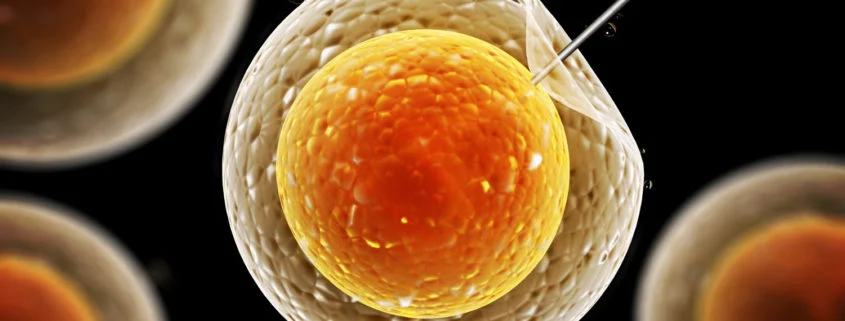
Satellite images make clear the massive changes that mankind has made to the surface of the Earth: cleared forests, massive dams and reservoirs, millions of miles of roads. If we could take satellite-type images of the microscopic world, the impact of biotechnology would be no less obvious. The majority of the food we eat comes from engineered plants, which are modified – either via modern technology or by more traditional artificial selection – to grow without pesticides, to require fewer nutrients, or to withstand the rapidly changing climate. Manufacturers have substituted petroleum-based ingredients with biomaterials in many consumer goods, such as plastics, cosmetics, and fuels. Your laundry detergent? It almost certainly contains biotechnology. So do nearly all of your cotton clothes.
But perhaps the biggest application of biotechnology is in human health. Biotechnology is present in our lives before we’re even born, from fertility assistance to prenatal screening to the home pregnancy test. It follows us through childhood, with immunizations and antibiotics, both of which have drastically improved life expectancy. Biotechnology is behind blockbuster drugs for treating cancer and heart disease, and it’s being deployed in cutting-edge research to cure Alzheimer’s and reverse aging. The scientists behind the technology called CRISPR/Cas9 believe it may be the key to safely editing DNA for curing genetic disease. And one company is betting that organ transplant waiting lists can be eliminated by growing human organs in chimeric pigs.
What are the risks of biotechnology?
Along with excitement, the rapid progress of research has also raised questions about the consequences of biotechnology advances. Biotechnology may carry more risk than other scientific fields: microbes are tiny and difficult to detect, but the dangers are potentially vast. Further, engineered cells could divide on their own and spread in the wild, with the possibility of far-reaching consequences. Biotechnology could most likely prove harmful either through the unintended consequences of benevolent research or from the purposeful manipulation of biology to cause harm. One could also imagine messy controversies, in which one group engages in an application for biotechnology that others consider dangerous or unethical.
1. Unintended Consequences
Sugarcane farmers in Australia in the 1930’s had a problem: cane beetles were destroying their crop. So, they reasoned that importing a natural predator, the cane toad, could be a natural form of pest control. What could go wrong? Well, the toads became a major nuisance themselves, spreading across the continent and eating the local fauna (except for, ironically, the cane beetle).
While modern biotechnology solutions to society’s problems seem much more sophisticated than airdropping amphibians into Australia, this story should serve as a cautionary tale. To avoid blundering into disaster, the errors of the past should be acknowledged.
- In 2014, the Center for Disease Control came under scrutiny after repeated errors led to scientists being exposed to Ebola, anthrax, and the flu. And a professor in the Netherlands came under fire in 2011 when his lab engineered a deadly, airborne version of the flu virus, mentioned above, and attempted to publish the details. These and other labs study viruses or toxins to better understand the threats they pose and to try to find cures, but their work could set off a public health emergency if a deadly material is released or mishandled as a result of human error.

- Mosquitoes are carriers of disease – including harmful and even deadly pathogens like Zika, malaria, and dengue – and they seem to play no productive role in the ecosystem. But civilians and lawmakers are raising concerns about a mosquito control strategy that would genetically alter and destroy disease-carrying species of mosquitoes. Known as a ‘gene drive,’ the technology is designed to spread a gene quickly through a population by sexual reproduction. For example, to control mosquitoes, scientists could release males into the wild that have been modified to produce only sterile offspring. Scientists who work on gene drive have performed risk assessments and equipped them with safeguards to make the trials as safe as possible. But, since a man-made gene drive has never been tested in the wild, it’s impossible to know for certain the impact that a mosquito extinction could have on the environment. Additionally, there is a small possibility that the gene drive could mutate once released in the wild, spreading genes that researchers never planned for. Even armed with strategies to reverse a rogue gene drive, scientists may find gene drives difficult to control once they spread outside the lab.
- When scientists went digging for clues in the DNA of people who are apparently immune to HIV, they found that the resistant individuals had mutated a protein that serves as the landing pad for HIV on the surface of blood cells. Because these patients were apparently healthy in the absence of the protein, researchers reasoned that deleting its gene in the cells of infected or at-risk patients could be a permanent cure for HIV and AIDS. With the arrival of the new tool, a set of ‘DNA scissors’ called CRISPR/Cas9, that holds the promise of simple gene surgery for HIV, cancer, and many other genetic diseases, the scientific world started to imagine nearly infinite possibilities. But trials of CRISPR/Cas9 in human cells have produced troubling results, with mutations showing up in parts of the genome that shouldn’t have been targeted for DNA changes. While a bad haircut might be embarrassing, the wrong cut by CRISPR/Cas9 could be much more serious, making you sicker instead of healthier. And if those edits were made to embryos, instead of fully formed adult cells, then the mutations could permanently enter the gene pool, meaning they will be passed on to all future generations. So far, prominent scientists and prestigious journals are calling for a moratorium on gene editing in viable embryos until the risks, ethics, and social implications are better understood.
2. Weaponizing Biology
The world recently witnessed the devastating effects of disease outbreaks, in the form of Ebola and the Zika virus – but those were natural in origin. The malicious use of biotechnology could mean that future outbreaks are started on purpose. Whether the perpetrator is a state actor or a terrorist group, the development and release of a bioweapon, such as a poison or infectious disease, would be hard to detect and even harder to stop. Unlike a bullet or a bomb, deadly cells could continue to spread long after being deployed. The US government takes this threat very seriously, and the threat of bioweapons to the environment should not be taken lightly either.
Developed nations, and even impoverished ones, have the resources and know-how to produce bioweapons. For example, North Korea is rumored to have assembled an arsenal containing “anthrax, botulism, hemorrhagic fever, plague, smallpox, typhoid, and yellow fever,” ready in case of attack. It’s not unreasonable to assume that terrorists or other groups are trying to get their hands on bioweapons as well. Indeed, numerous instances of chemical or biological weapon use have been recorded, including the anthrax scare shortly after 9/11, which left 5 dead after the toxic cells were sent through the mail. And new gene editing technologies are increasing the odds that a hypothetical bioweapon targeted at a certain ethnicity, or even a single individual like a world leader, could one day become a reality.
While attacks using traditional weapons may require much less expertise, the dangers of bioweapons should not be ignored. It might seem impossible to make bioweapons without plenty of expensive materials and scientific knowledge, but recent advances in biotechnology may make it even easier for bioweapons to be produced outside of a specialized research lab. The cost to chemically manufacture strands of DNA is falling rapidly, meaning it may one day be affordable to ‘print’ deadly proteins or cells at home. And the openness of science publishing, which has been crucial to our rapid research advances, also means that anyone can freely Google the chemical details of deadly neurotoxins. In fact, the most controversial aspect of the supercharged influenza case was not that the experiments had been carried out, but that the researchers wanted to openly share the details.
On a more hopeful note, scientific advances may allow researchers to find solutions to biotechnology threats as quickly as they arise. Recombinant DNA and biotechnology tools have enabled the rapid invention of new vaccines which could protect against new outbreaks, natural or man-made. For example, less than 5 months after the World Health Organization declared Zika virus a public health emergency, researchers got approval to enroll patients in trials for a DNA vaccine.

The ethics of biotechnology
Biotechnology doesn’t have to be deadly, or even dangerous, to fundamentally change our lives. While humans have been altering genes of plants and animals for millennia – first through selective breeding and more recently with molecular tools and chimeras – we are only just beginning to make changes to our own genomes (amid great controversy).
Cutting-edge tools like CRISPR/Cas9 and DNA synthesis raise important ethical questions that are increasingly urgent to answer. Some question whether altering human genes means “playing God,” and if so, whether we should do that at all. For instance, if gene therapy in humans is acceptable to cure disease, where do you draw the line? Among disease-associated gene mutations, some come with virtual certainty of premature death, while others put you at higher risk for something like Alzheimer’s, but don’t guarantee you’ll get the disease. Many others lie somewhere in between. How do we determine a hard limit for which gene surgery to undertake, and under what circumstances, especially given that the surgery itself comes with the risk of causing genetic damage? Scholars and policymakers have wrestled with these questions for many years, and there is some guidance in documents such as the United Nations’ Universal Declaration on the Human Genome and Human Rights.
And what about ways that biotechnology may contribute to inequality in society? Early work in gene surgery will no doubt be expensive – for example, Novartis plans to charge $475,000 for a one-time treatment of their recently approved cancer therapy, a drug which, in trials, has rescued patients facing certain death. Will today’s income inequality, combined with biotechnology tools and talk of ‘designer babies’, lead to tomorrow’s permanent underclass of people who couldn’t afford genetic enhancement?
Advances in biotechnology are escalating the debate, from questions about altering life to creating it from scratch. For example, a recently announced initiative called GP-Write has the goal of synthesizing an entire human genome from chemical building blocks within the next 10 years. The project organizers have many applications in mind, from bringing back wooly mammoths to growing human organs in pigs. But, as critics pointed out, the technology could make it possible to produce children with no biological parents, or to recreate the genome of another human, like making cellular replicas of Einstein. “To create a human genome from scratch would be an enormous moral gesture,” write two bioethicists regarding the GP-Write project. In response, the organizers of GP-Write insist that they welcome a vigorous ethical debate, and have no intention of turning synthetic cells into living humans. But this doesn’t guarantee that rapidly advancing technology won’t be applied in the future in ways we can’t yet predict.
What are the tools of biotechnology?
1. DNA Sequencing
It’s nearly impossible to imagine modern biotechnology without DNA sequencing. Since virtually all of biology centers around the instructions contained in DNA, biotechnologists who hope to modify the properties of cells, plants, and animals must speak the same molecular language. DNA is made up of four building blocks, or bases, and DNA sequencing is the process of determining the order of those bases in a strand of DNA. Since the publication of the complete human genome in 2003, the cost of DNA sequencing has dropped dramatically, making it a simple and widespread research tool.
Benefits: Sonia Vallabh had just graduated from law school when her mother died from a rare and fatal genetic disease. DNA sequencing showed that Sonia carried the fatal mutation as well. But far from resigning to her fate, Sonia and her husband Eric decided to fight back, and today they are graduate students at Harvard, racing to find a cure. DNA sequencing has also allowed Sonia to become pregnant, since doctors could test her eggs for ones that don’t have the mutation. While most people’s genetic blueprints don’t contain deadly mysteries, our health is increasingly supported by the medical breakthroughs that DNA sequencing has enabled. For example, researchers were able to track the 2014 Ebola epidemic in real time using DNA sequencing. And pharmaceutical companies are designing new anti-cancer drugs targeted to people with a specific DNA mutation. Entire new fields, such as personalized medicine, owe their existence to DNA sequencing technology.
Risks_:_ Simply reading DNA is not harmful, but it is foundational for all of modern biotechnology. As the saying goes, knowledge is power, and the misuse of DNA information could have dire consequences. While DNA sequencing alone cannot make bioweapons, it’s hard to imagine waging biological warfare without being able to analyze the genes of infectious or deadly cells or viruses. And although one’s own DNA information has traditionally been considered personal and private, containing information about your ancestors, family, and medical conditions, governments and corporations increasingly include a person’s DNA signature in the information they collect. Some warn that such databases could be used to track people or discriminate on the basis of private medical records – a dystopian vision of the future familiar to anyone who’s seen the movie GATTACA. Even supplying patients with their own genetic information has come under scrutiny, if it’s done without proper context, as evidenced by the dispute between the FDA and the direct-to-consumer genetic testing service 23andMe. Finally, DNA testing opens the door to sticky ethical questions, such as whether to carry to term a pregnancy after the fetus is found to have a genetic mutation.
2. Recombinant DNA
The modern field of biotechnology was born when scientists first manipulated – or ‘recombined’ – DNA in a test tube, and today almost all aspects of society are impacted by so-called ‘rDNA’. Recombinant DNA tools allow researchers to choose a protein they think may be important for health or industry, and then remove that protein from its original context. Once removed, the protein can be studied in a species that’s simple to manipulate, such as E. coli bacteria. This lets researchers reproduce it in vast quantities, engineer it for improved properties, and/or transplant it into a new species. Modern biomedical research, many best-selling drugs, most of the clothes you wear, and many of the foods you eat rely on rDNA biotechnology.
Benefits: Simply put, our world has been reshaped by rDNA. Modern medical advances are unimaginable without the ability to study cells and proteins with rDNA and the tools used to make it, such as PCR, which helps researchers ‘copy and paste’ DNA in a test tube. An increasing number of vaccines and drugs are the direct products of rDNA. For example, nearly all insulin used in treating diabetes today is produced recombinantly. Additionally, cheese lovers may be interested to know that rDNA provides ingredients for a majority of hard cheeses produced in the West. Many important crops have been genetically modified to produce higher yields, withstand environmental stress, or grow without pesticides. Facing the unprecedented threats of climate change, many researchers believe rDNA and GMOs will be crucial in humanity’s efforts to adapt to rapid environmental changes.
Risks: The inventors of rDNA themselves warned the public and their colleagues about the dangers of this technology. For example, they feared that rDNA derived from drug-resistant bacteria could escape from the lab, threatening the public with infectious superbugs. And recombinant viruses, useful for introducing genes into cells in a petri dish, might instead infect the human researchers. Some of the initial fears were allayed when scientists realized that genetic modification is much trickier than initially thought, and once the realistic threats were identified – like recombinant viruses or the handling of deadly toxins – safety and regulatory measures were put in place. Still, there are concerns that rogue scientists or bioterrorists could produce weapons with rDNA. For instance, it took researchers just 3 years to make poliovirus from scratch in 2006, and today the same could be accomplished in a matter of weeks. Recent flu epidemics have killed over 200,000, and the malicious release of an engineered virus could be much deadlier – especially if preventative measures, such as vaccine stockpiles, are not in place.

3. DNA Synthesis
Synthesizing DNA has the advantage of offering total researcher control over the final product. With many of the mysteries of DNA still unsolved, some scientists believe the only way to truly understand the genome is to make one from its basic building blocks. Building DNA from scratch has traditionally been too expensive and inefficient to be very practical, but in 2010, researchers did just that, completely synthesizing the genome of a bacteria and injecting it into a living cell. Since then, scientists have made bigger and bigger genomes, and recently, the GP-Write project launched with the intention of tackling perhaps the ultimate goal: chemically fabricating an entire human genome. Meeting this goal – and within a 10 year timeline – will require new technology and an explosion in manufacturing capacity. But the project’s success could signal the impact of synthetic DNA on the future of biotechnology.
Benefits: Plummeting costs and technical advances have made the goal of total genome synthesis seem much more immediate. Scientists hope these advances, and the insights they enable, will ultimately make it easier to make custom cells to serve as medicines or even bomb-sniffing plants. Fantastical applications of DNA synthesis include human cells that are immune to all viruses or DNA-based data storage. Prof. George Church of Harvard has proposed using DNA synthesis technology to ‘de-extinct’ the passenger pigeon, wooly mammoth, or even Neanderthals. One company hopes to edit pig cells using DNA synthesis technology so that their organs can be transplanted into humans. And DNA is an efficient option for storing data, as researchers recently demonstrated when they stored a movie file in the genome of a cell.

Risks_:_ DNA synthesis has sparked significant controversy and ethical concerns. For example, when the GP-Write project was announced, some criticized the organizers for the troubling possibilities that synthesizing genomes could evoke, likening it to playing God. Would it be ethical, for instance, to synthesize Einstein’s genome and transplant it into cells? The technology to do so does not yet exist, and GP-Write leaders have backed away from making human genomes in living cells, but some are still demanding that the ethical debate happen well in advance of the technology’s arrival. Additionally, cheap DNA synthesis could one day democratize the ability to make bioweapons or other nuisances, as one virologist demonstrated when he made the horsepox virus (related to the virus that causes smallpox) with DNA he ordered over the Internet. (It should be noted, however, that the other ingredients needed to make the horsepox virus are specialized equipment and deep technical expertise.)
4. Genome Editing
Many diseases have a basis in our DNA, and until recently, doctors had very few tools to address the root causes. That appears to have changed with the recent discovery of a DNA editing system called CRISPR/Cas9. (A note on terminology – CRISPR is a bacterial immune system, while Cas9 is one protein component of that system, but both terms are often used to refer to the protein.) It operates in cells like a DNA scissor, opening slots in the genome where scientists can insert their own sequence. While the capability of cutting DNA wasn’t unprecedented, Cas9 dusts the competition with its effectiveness and ease of use. Even though it’s a biotech newcomer, much of the scientific community has already caught ‘CRISPR-fever,’ and biotech companies are racing to turn genome editing tools into the next blockbuster pharmaceutical.
Benefits: Genome editing may be the key to solving currently intractable genetic diseases such as cystic fibrosis, which is caused by a single genetic defect. If Cas9 can somehow be inserted into a patient’s cells, it could fix the mutations that cause such diseases, offering a permanent cure. Even diseases caused by many mutations, like cancer, or caused by a virus, like HIV/AIDS, could be treated using genome editing. Just recently, an FDA panel recommended a gene therapy for cancer, which showed dramatic responses for patients who had exhausted every other treatment. Genome editing tools are also used to make lab models of diseases, cells that store memories, and tools that can detect epidemic viruses like Zika or Ebola. And as described above, if a gene drive, which uses Cas9, is deployed effectively, we could eliminate diseases such as malaria, which kills nearly half a million people each year.
Risks_:_ Cas9 has generated nearly as much controversy as it has excitement, because genome editing carries both safety issues and ethical risks. Cutting and repairing a cell’s DNA is not risk-free, and errors in the process could make a disease worse, not better. Genome editing in reproductive cells, such as sperm or eggs, could result in heritable genetic changes, meaning dangerous mutations could be passed down to future generations. And some warn of unethical uses of genome editing, fearing a rise of ‘designer babies’ if parents are allowed to choose their children’s traits, even though there are currently no straightforward links between one’s genes and their intelligence, appearance, etc. Similarly, a gene drive, despite possibly minimizing the spread of certain diseases, has the potential to create great harm since it is intended to kill or modify an entire species. A successful gene drive could have unintended ecological impacts, be used with malicious intent, or mutate in unexpected ways. Finally, while the capability doesn’t currently exist, it’s not out of the realm of possibility that a rogue agent could develop genetically selective bioweapons to target individuals or populations with certain genetic traits.
Recommended References
Videos
- Prof. Marc Lipsitch: Risks and Benefits of Gain-of-Function Experiments in Potentially Pandemic Pathogens
- Cathal Garvey: Bringing Biotechnology into the Home (TEDx Talk): In this TEDx talk, Cathal Garvey reviews the benefits of biotechnology and introduces consumer biotechnologies in development; such as bioprinters, customized pets, downloadable DNA, and biochips.
- Nina Tandon: Caring for Engineered Tissue (TED Talk): In this TED talk Nina Tandon talks about simple but powerful methods of caring for artificially grown cells by copying their natural environment.
- Gregory Stock: To Upgrade is Human (TED Talk): Biotech ethicist Gregory Stock talks about new, more meaningful (and controversial) technologies, like customizable babies, whose adoption might drive human evolution.
- Richard Resnick: Welcome to the Genomic Revolution (TEDx Talk): In this accessible talk from TEDxBoston, Richard Resnick shows how cheap and fast genome sequencing is about to turn health care (and insurance, and politics) upside down.
- Ellen Jorgensen: Biohacking – You Can Do It Too (TED Talk): In this TED talk, Ellen Jorgensen introduces us to the biohacking community and reviews common misconceptions about the dangers of biohacking.
Research Papers
- Potential Biohazards of Recombinant DNA Molecules
- Climate Change and its Effect in Agriculture
- Current CRISPR gene drive systems are likely to be highly invasive in wild populations
- Bioweapons, Biodiversity, and Ecocide: Potential Effects of Biological Weapons on Biological Diversity
- An analysis of gene drive risks and safeguards
- Gene Drive FAQ
- Bruce Schneier – Resources on Existential Risk, p. 103
Books
- Biotechnology for Beginners: An overview of biotechnology for beginners and lay readers. Includes a wide array of biotech sciences such as: genetics, immunology, biochemistry, agronomy, food science, and animal science.
- Biotechnology and the Human Good
- Fighting for the Future of Food
- Introduction to Biotechnology
- Our Posthuman Future: Consequences of the Biotechnology Revolution
Informational Documents
- What is CRISPR-Cas9?
- FAQs: Gene drives
- What is PCR (polymerase chain reaction)?
- DNA Databases and Human Rights
- What Exactly Is Synthetic Biology?
- GP-write Announces ‘Ultra-safe Cells’ as Featured Community Project
- Summary of historical attacks using chemical or biological weapons
- National Biodefense Analysis and Countermeasures Center
- Universal Declaration on the Human Genome and Human Rights
Articles
- Designer babies: an ethical horror waiting to happen?
- Scientists program cells to remember and respond to series of stimuli
- Should We Synthesize a Human Genome?
- As D.I.Y. Gene Editing Gains Popularity, ‘Someone Is Going to Get Hurt’
- DNA could store all of the world’s data in one room
- Researchers Say They Created a ‘Synthetic Cell’
- Asilomar 1975: DNA modification secured
- Scientists Seek Moratorium on Edits to Human Genome That Could Be Inherited
- What Is Personalized Medicine?
- You’re Only Human, But Your Kids Could Be So Much More
- Using CRISPR, scientists efficiently edit genome of viable human embryos
- First human-pig ‘chimera’ created in milestone study
- Cheap DNA Sequencing Is Here. Writing DNA Is Next
Organizations
- Cambridge Working Group: Works to address the risks of Potential Pandemic Pathogen research through promoting public understanding, risk assessment and regulation of such research.
- etc Group: Works to address the socioeconomic and ecological issues surrounding new technologies (especially agriculture) that could have an impact on the world’s poorest and most vulnerable people.
- American Biological Safety Association (ABSA): Promotes biosafety as a scientific discipline through forums and peer-reviewed journals for biosafety professionals throughout the world.
- Biomedical Advanced Research and Development Authority (BARDA): Develops and procures needed medical countermeasures (MCMs), including vaccines, therapeutics, diagnostics, and non-pharmaceutical countermeasures, against a broad array of public health emergencies in the US.
- Biotechnology Industry Organization (BIO): A trade association representing biotechnology companies, academic institutions, state biotechnology centers, and related organizations around the world. Researches and developes innovative healthcare, agriculturual, industrial, and environmental biotechnology products.
- Center for Advanced Biotechnology and Medicine: Conducts biomedical and biotech research and development to improve human health.
- Center for Biodefense and Emerging Infectious Diseases (CBEID): Addresses and researches important issues in the protection of the US from biological threats, including bioterrorism, biological warfare, and tropical infectious diseases.
- Center for Infectious Disease Research and Policy (CIDRAP): Works to prevent illness and death from infectious disease threats through research by implementing real world practical applications, policies, and solutions.
- Center for International Security and Cooperation: Stanford University’s hub for researchers working together to tackle some of the world’s most pressing security and international cooperation issues; and to influence the policymaking agenda in the United States and abroad to help build a safer world.
- Center for Policy on Emerging Technologies (C-PET): A wide network of knowledgeable professionals who identify, clarify, and prioritize the big questions raised in a future perspective to cultivate a context within which solutions can be developed.
- Center for Strategic and International Studies (CSIS): A bipartisan organization that conducts research and analysis, and develops policy initiatives with a future outlook, to help decision-makers chart a course toward a better world.
- Centers for Disease Control and Prevention (CDC): The United States government’s center for research, analysis, and detection of new and emerging global health threats. Promotes healthy and safe behaviors, communities, and environments.
- Centre for Cellular and Molecular Platforms (C-CAMP): A research and development center in India which enables bioscience research and entrepreneurship by providing research, development, training, and service in biotechnology platforms.
- Centre for the Study of Existential Risk: A multidisciplinary research center dedicated to the study and mitigation of risks that could lead to human extinction.
- Chemical Biological Incident Response Force (CBIRF): Responds to chemical, biological, radiological, nuclear, or high yield explosive events in order to assist local, state, or federal agencies in consequence management.
- Chinese Center for Disease Control and Prevention (China CDC): A nonprofit institution that works in the fields of disease control and prevention, and public health management.
- Defence Advanced Research Projects Agency (DARPA) – Biological Technologies Office: Researches and designs breakthrough technologies for nation security.
- Defence Threat Reduction Agency (DTRA): The U.S. Department of Defense’s official Combat Support Agency for countering weapons of mass destruction.
- EcoHealth Alliance: An international organization of scientists dedicated to the conservation of biodiversity that researches the relationships between wildlife, ecosystems, and human health.
- Emerging Pandemic Threats (EPT) Program: Monitors and increases local capacities of geographic hot spots to identify the emergence of new infectious diseases in high-risk wildlife that could pose a major threat to human health.
- Federation of American Scientists (FAS): Provides a scientific analysis of and solutions to protect against catastrophic threats to national and international security.
- Foresight Institute: A think tank and public interest organization focused on transformative future technologies. Discovers and promotes the technological benefits, and helps avoid the dangers of nanotechnology, AI, biotech, and other similar life-changing developments.
- Global Catastrophic Risk Institute (GCRI): A think tank leading research, education, and professional networking on global catastrophic risk.
- Intelligence: Collects and conveys essential information the President and the members of policymaking, law enforcement, and military communities require to execute their appointed duties.
- International Federation of Biosafety Associatons (IFBA): Supports and promotes biosafety on a national and international level through collaboration among national and regional biosafety organizations worldwide.
- International Geosphere-Biosphere Programme (IGBP): Studies the global-scale and regional-scale interactions between Earth’s biological, chemical, and physical processes and their interactions with human systems.
- Lawrence Livermore National Laboratory (LLNL): Applies multidisciplinary science and technology to anticipate, innovate, and deliver responsive solutions to complex global security needs.
- Lifeboat Foundation: An organization dedicated to encouraging scientific advancements while helping humanity survive existential risks and possible misuse of increasingly powerful technologies.
- Middle East Consortium on Infectious Disease Surveillance (MECIDS): Advances the capabilities for early infectious disease and food-borne illness prevention, detection, control, and response between its member countries of Israel, Jordan, and Palestine.
- National Institute of Allergy and Infectious Diseases (NIH): Conducts and supports basic and applied research to better understand, treat, and prevent infectious, immunologic, and allergic diseases.
- New England Complex Systems Institute (NECSI): An independent academic research and educational institution that develops complex systems and its applications to study how interactions within a system lead to its behavioral patterns, and how the system interacts with its environment.
- Nuclear Threat Initiative (NTI): A nonpartisan organization that focuses on strengthening global security by reducing the risk of using and preventing the spread of nuclear, biological, and chemical weapons.
- Resilience Alliance: A research organization comprised of scientists and practitioners from many disciplines who collaborate to explore the dynamics of social-ecological systems.
- Skoll Global Threats Fund: Seeks solutions, strengthens alliances, and spurs actions needed to confront the global threats imperiling humanity.
- Society for Risk Analysis (SRA): A multidisciplinary, interdisciplinary, scholarly, international society that provides an open forum for all those who are interested in risk analysis.
- The Biosecurity Engagement Program (BEP): Engages with Life Scientists to combat biological threats worldwide by providing assistance to improve biosecurity, biosafety, pathogen surveillance, and infectious disease surveillance and response.
- The Center for Bioethics and Human Dignity (CBHD)
- The Club of Rome: An informal association of long-term thinkers interested in and concerned with the future of humanity and the planet.
- The Genome Analysis Centre (TGAC): A research institute focused on the application of genomics and bioinformatics to advance plant, animal, and microbial research to promote a sustainable bioeconomy.
- The Institute for Ethics and Emerging Technologies (IEET): A think tank which promotes ideas about how technological progress can increase freedom, happiness, and human flourishing in democratic societies.
- The Program on Science and Global Security (SGS): Carries out research, policy analysis, education, and training in nuclear arms control and nonproliferation, and provides research and administrative support to the International Panel on Fissile Materials.
- U.S. Department of Defense (DOD): Provides military forces needed to deter war and to protect the security of the United States.
- U.S. Department of Homeland Security (DHS) – National Biodefense Analysis and Countermeasures Center (NBACC): A national resource used to understand the scientific basis of the risks posed by biological threats and to attribute their use in bioterrorism or biocrime events.
- UPMC Center for Health Security: Protects people’s health from the consequences of epidemics and disasters, and ensures that communities are resilient to major challenges.
- Wilson Center: A non-partisan policy forum and a leading institution for tackling global issues through independent research and open dialogue to inform actionable ideas for Congress, the Administration, and the broader policy community.
- X-events: A research institute that works with the theory of surpize, studies extreme events, experiments different anticipation methods, and develops tools for research and decision making.
- Prevent Project: PREVENT works to reduce the risks that zoonoses—diseases that move between animals and humans—can pose to public health.
The organizations above all work on biotechnology issues, though many cover other topics as well. This list is undoubtedly incomplete; please contact us to suggest additions or corrections.
Special thanks to Jeff Bessen for his help researching and writing this page.
About the Future of Life Institute
The Future of Life Institute (FLI) is a global think tank with a team of 20+ full-time staff operating across the US and Europe. FLI has been working to steer the development of transformative technologies towards benefitting life and away from extreme large-scale risks since its founding in 2014. Find out more about our mission or explore our work.
Related content
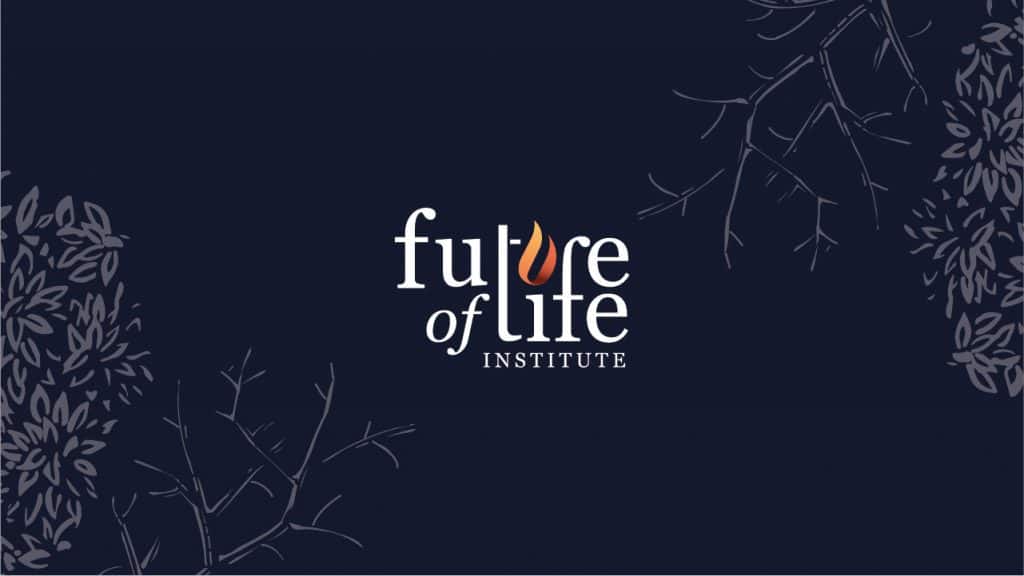
Statement on Superintelligence
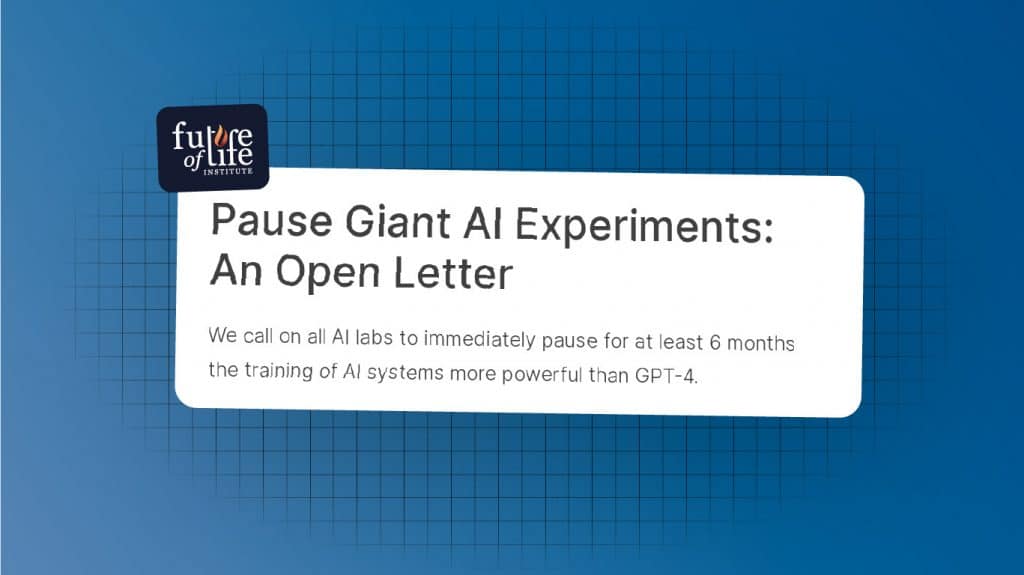
Pause Giant AI Experiments: An Open Letter
